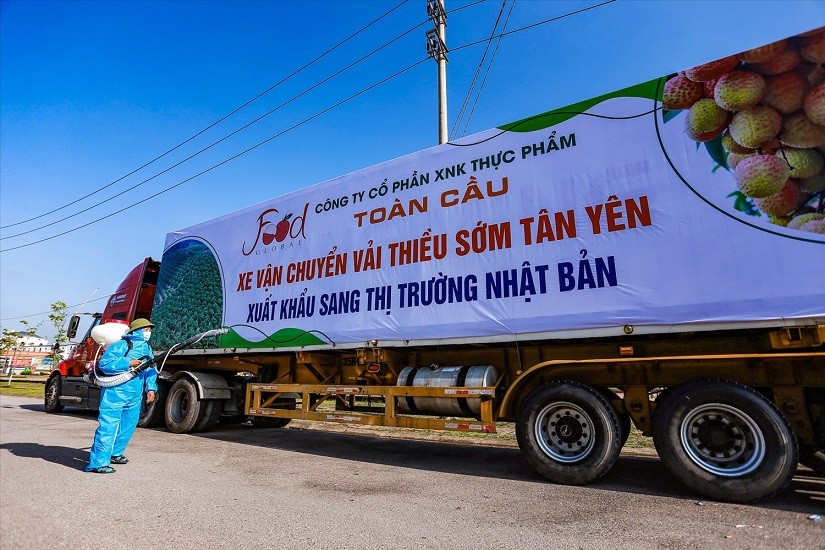 |
| A truck transporting fabric for export to the Japanese market. (Source: Ethnic & Development Newspaper) |
Nearly 100 tons of lychee have "arrived" in demanding markets.
According to information from the Plant Protection Department ( Ministry of Agriculture and Rural Development ), although it is just the beginning of the season, the amount of lychee exported from Vietnam to high-value markets has shown very positive signs.
Accordingly, from June 3 to 7, nearly 100 tons of lychee were exported to Japan, Australia, the UK, and the EU. In Japan alone, in just 3 days from June 4 to 7, nearly 40 tons of lychee were successfully exported.
The leader of the Department of Industry and Trade of Bac Giang province said that on June 15, Bac Giang lychee will be exported to the Australian market for the first time, about 3 tons.
Learning from previous lychee crops, this year, under the guidance of the Plant Protection Department on plant quarantine and food safety requirements for each market, localities, production households and lychee exporting enterprises have proactively taken action very early, carefully preparing export plans.
It is forecasted that the amount of lychee exported to high-value markets will increase compared to previous years, contributing to the overall success of this year's lychee crop.
Although the market signal is quite good, the volume of lychee exported to demanding markets is still quite modest. There is still much work to be done to bring Vietnamese lychee to the market.
Mr. Dang Phuc Nguyen - General Secretary of the Vietnam Fruit and Vegetable Association - said that when exporting Vietnamese lychees to world markets such as the United States, EU, etc., they often face strong competition with Chinese lychees.
As in the Australian market, China is the world's largest producer of lychees, with the harvest season lasting from February to July. Chinese farmers have professionalized the harvesting process, especially the irradiation plant located right in the raw material area. Therefore, after harvesting, lychees are available in Australian supermarkets within just one or two days.
Meanwhile, Vietnam's lychee growing area is 1/10 of China's, and the lychee season is only in June and July. Furthermore, after being harvested and packaged in the northern provinces, the lychees continue to be transported to Ho Chi Minh City for irradiation for export. From the time of harvesting until the lychees arrive in Australia, it takes a whole week, which affects the color and quality of the lychees...
According to Mr. Dang Phuc Nguyen, in order for Vietnamese lychees to be competitive when exported to Australia, the Association has proposed applying Methyl Bromide technology similar to what Japan is doing to fruits instead of having to bring lychees to Ho Chi Minh City for irradiation.
Or the Ministry of Industry and Trade suggests that Vietnamese airlines can prioritize the immediate transportation of lychee batches for irradiation in Ho Chi Minh City as well as support the freight rates. At the same time, farmers need to change the harvest time, so that within just a few days, Vietnamese lychees can be on supermarket shelves in Australia.
With over 331 million people and large consumption, the US market still has a lot of room for Vietnamese fruits to expand and develop. It is a huge fruit consumption market with diverse needs, increasingly focusing on vegetables, fruits, and organic foods that are good for health. The main customer group today is the Asian community and especially the growing Vietnamese community, concentrated in large cities and urban areas of the United States.
For lychee, to meet the increasing demand, the United States imports lychees from China, Vietnam, India, and Thailand, of which Luc Ngan, Bac Giang lychees are always welcomed and highly appreciated by American consumers for their quality.
However, according to the Vietnam Trade Office in the United States, Vietnamese lychees still face some obstacles in accessing the market for Vietnamese agricultural products in general and lychees in particular. Accordingly, there is no irradiation facility according to US standards located in the North.
The process from harvesting, transporting to consumers in the United States is long, the packaging and preservation process does not meet standards, leading to lychees being easily damaged and discolored when they reach supermarket shelves. Vietnam's main competitors are China and Mexico, which have a lot of experience, widespread distribution systems, competitive prices, and low transportation costs.
The United States and Australia are two markets that require lychees to be treated with irradiation. However, for the Australian market, there are many advantages, as the irradiation and packaging of lychees are carried out right at the Hanoi Irradiation Center.
The US market only accepts two facilities in Ho Chi Minh City and Long An that are qualified for irradiation and packaging. To export lychees to the US, for many years now, businesses have had to transport them from Bac Giang and Hai Duong to the South, which is costly and time-consuming, while lychees have a short season.
The leader of the Plant Protection Department said that they are actively working with the Animal and Plant Health Inspection Service (APHIS) under the US Department of Agriculture to have the Hanoi Irradiation Center recognized as qualified to irradiate lychees exported to this market.
Leather and footwear exports recover
Within the framework of the National Trade Promotion Program chaired by the Ministry of Industry and Trade, on June 8, the International Conference on Export Promotion of Vietnam's Leather and Footwear Industry took place in Ho Chi Minh City, with the participation of more than 150 enterprises, associations and international partners.
In the context of the leather and footwear industry's export turnover decreasing by about 14% in the past 5 months, businesses determined that participating in trade promotion activities will help businesses directly contact the needs of importers, find potential partners, and increase opportunities to expand the market.
In the three scenarios outlined by the leather, footwear and handbag industry this year, with the current situation, the industry is in the middle scenario, meaning the third quarter will continue to decrease by less than 10% and recover in the fourth quarter. The whole year's growth will decrease by about 7.5% compared to last year.
However, the opportunity is that trade agreements are taking effect and international customers when working with businesses all have high appreciation for the designs and quality of Vietnamese goods.
According to the Vietnam Leather, Footwear and Handbag Association, the bright spot is that orders in the third quarter have improved, with growth in the Asian market reaching more than 10%; while the US, China and Japan are still the largest leather and footwear import markets.
Through contact with partners, the Vietnamese leather and footwear industry also determined that the short-term solution is to focus on reducing costs for businesses and arranging appropriate production to minimize the risk of workers being laid off.
In the long term, we must directly participate in the design process, improve models, focus on raw material flows towards sustainable development, green and clean production, and meet the strict standards of importers.
Caught with IUU “yellow card”, seafood exports to EU plummet
On October 23, 2017, the European Commission (EC) issued a warning against illegal, unreported and unregulated fishing (IUU fishing) to Vietnam. However, after more than 5 years of efforts, Vietnam has not yet removed the IUU “yellow card” because it has not overcome the shortcomings as recommended by the EC.
The IUU “yellow card” warning has greatly affected Vietnam’s seafood exports in particular and seafood exports in general. Ms. Le Hang - Communications Director of the Vietnam Association of Seafood Exporters and Producers (VASEP) - cited that before the IUU “yellow card” warning, in the period 2015 - 2017, the EU was Vietnam’s largest seafood import market, accounting for 30 - 35% of Vietnam’s seafood exports.
However, since the IUU “yellow card” warning, the proportion of Vietnam’s seafood exports to this market has gradually decreased over the years. According to VASEP statistics, in 2018 - the first year after the “yellow card” warning, the proportion of seafood exports to the EU market accounted for 11.8%. In 2019, this figure decreased to 10.7% and to 9.5% in 2020. By 2022 - that is, after 5 years, the proportion had decreased to 9.4%.
The EC's imposition of the IUU "yellow card" on seafood has forced exporting enterprises to find ways to shift to other markets such as the United States, Japan, and South Korea. In addition, there is a trend of processing for seafood traders in other countries and exporting back to those countries, especially processing marine fish such as cod, mackerel, pollock, etc.
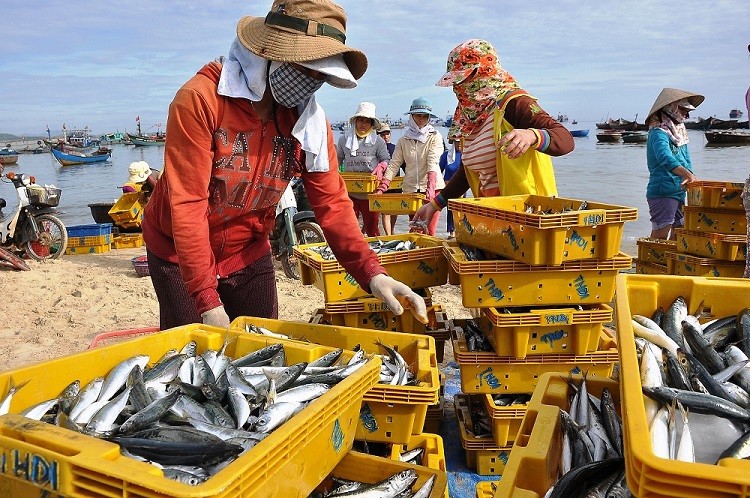 |
| After more than 5 years of efforts, Vietnam has yet to remove the IUU “yellow card” because it has not yet overcome the shortcomings as recommended by the EC. (Source: Long An Newspaper) |
Ms. Le Hang said that this is a way to both utilize processing capacity and create jobs for workers without being pressured by raw materials and traceability according to IUU regulations.
“Even exports to the EU now have a significant proportion of processed goods, while purely domestic raw materials are both scarce and difficult to make catch certificates (SC) and catch certificates (CC) that meet the IUU regulations of this market,” Ms. Le Hang shared.
Currently, not only the EU market but also the US and Japan are implementing requirements on traceability forms... Therefore, Ms. Le Hang believes that we must strictly implement the regulations of international organizations and removing the IUU "yellow card" is a very important task.
Regarding this issue, Mr. Phung Duc Tien - Deputy Minister of Agriculture and Rural Development commented that when seafood is given the IUU "yellow card", it will greatly affect Vietnam's seafood exports. Because before, when exporting to the EU market, businesses only took 1-3 days to complete procedures, but now it takes 2-3 weeks. Not only that, this also affects the position of Vietnamese seafood in the international market, affects the lives of fishermen, and affects the seafood industry.
According to the plan, in October 2023, the EC Inspection Delegation will have the fourth working session with the Vietnamese side on the removal of the IUU “yellow card”. There is not much time left until then. Therefore, the Ministry of Agriculture and Rural Development is continuing to review, inspect, and urge the implementation and overcoming of shortcomings and limitations according to the EC’s recommendations in localities.
At the same time, we are continuing to urge the completion of the installation of VMS monitoring equipment for fishing vessels operating at sea (currently reaching 96.6%). Check and control 100% of fishing vessels entering and leaving ports, and carry out certification of seafood traceability. Urgently review fishing vessel loading and unloading points, ensuring that 100% of fishing vessels with a length of 15 m or more dock in accordance with regulations.
Along with that, continue to review and update vessels at high risk of IUU violations and organize peak patrols and control of adjacent and overlapping sea areas to prevent IUU fishing vessels. "Recently, the maritime authorities maintained 35-41 vessels in the border areas but there were still six cases/six vessels/35 fishermen violating foreign waters , " said Mr. Tran Dinh Luan.
The Government Office has just issued Notice 209/TB-VPCP on the conclusion of Deputy Prime Minister Tran Luu Quang at the 7th meeting of the National Steering Committee on combating IUU fishing. Accordingly, in order to resolve existing problems and limitations, and at the same time to ensure good preparation for receiving and working with the EC Inspection Delegation in October 2023; with the determination to remove the IUU "yellow card" warning by October 2023, the Deputy Prime Minister requested departments, ministries, branches and localities to launch a peak inspection period. Seriously organize the review of organizations and individuals if violations against IUU fishing occur in the locality.
"Vietnam is integrating more and more deeply into the world economy, so there is no other way but to strictly implement the regulations of international organizations. That is also the spirit of the 2017 Fisheries Law, which is to develop the fisheries industry sustainably. Decision 81/QD-TTg issued by the Prime Minister on February 13 also sets the goal that we must remove the yellow card by 2023. Therefore, removing the IUU "yellow card" is a very important task," Mr. Phung Duc Tien emphasized.
Source


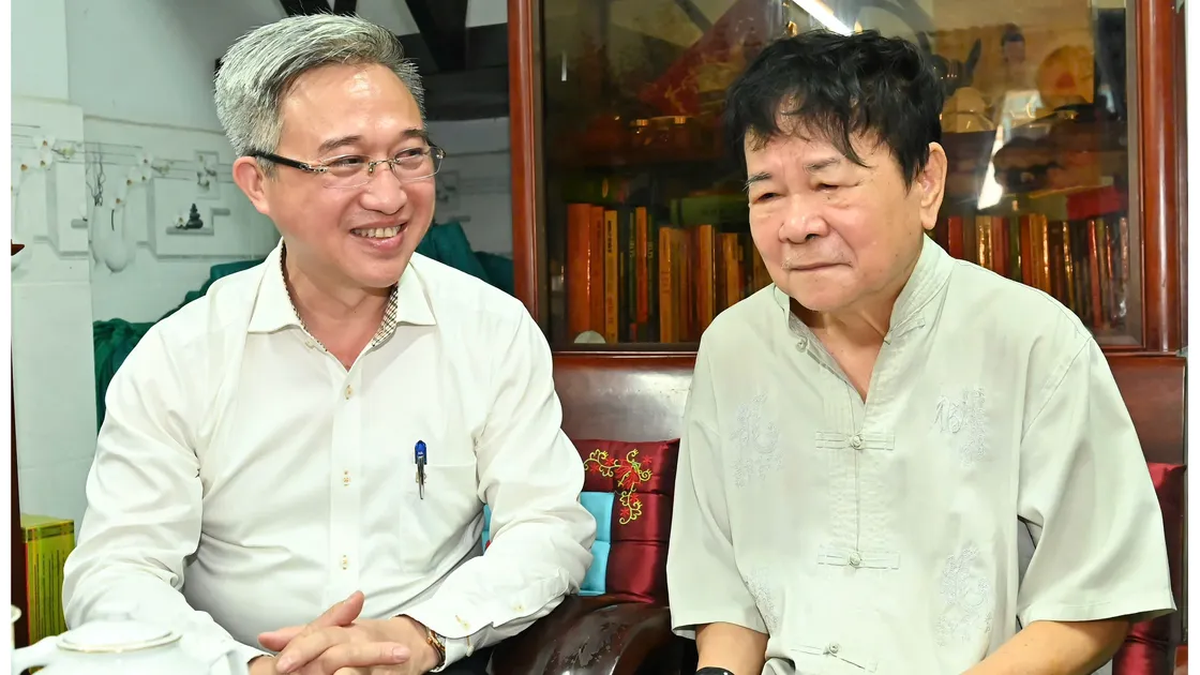
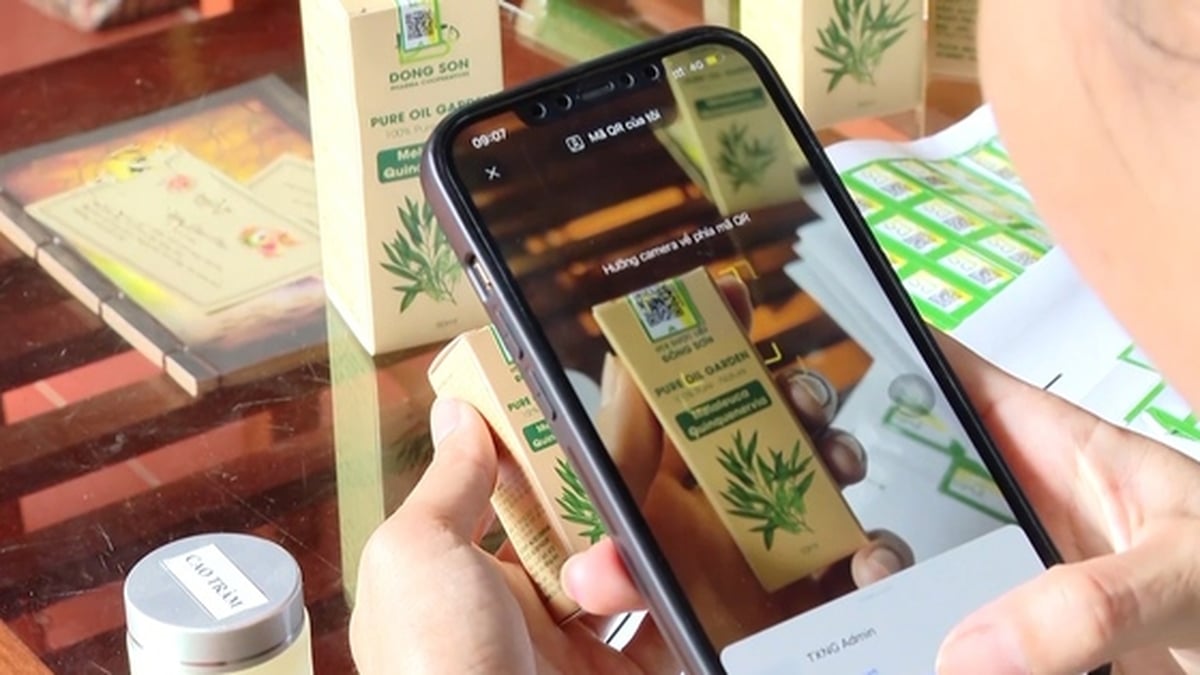
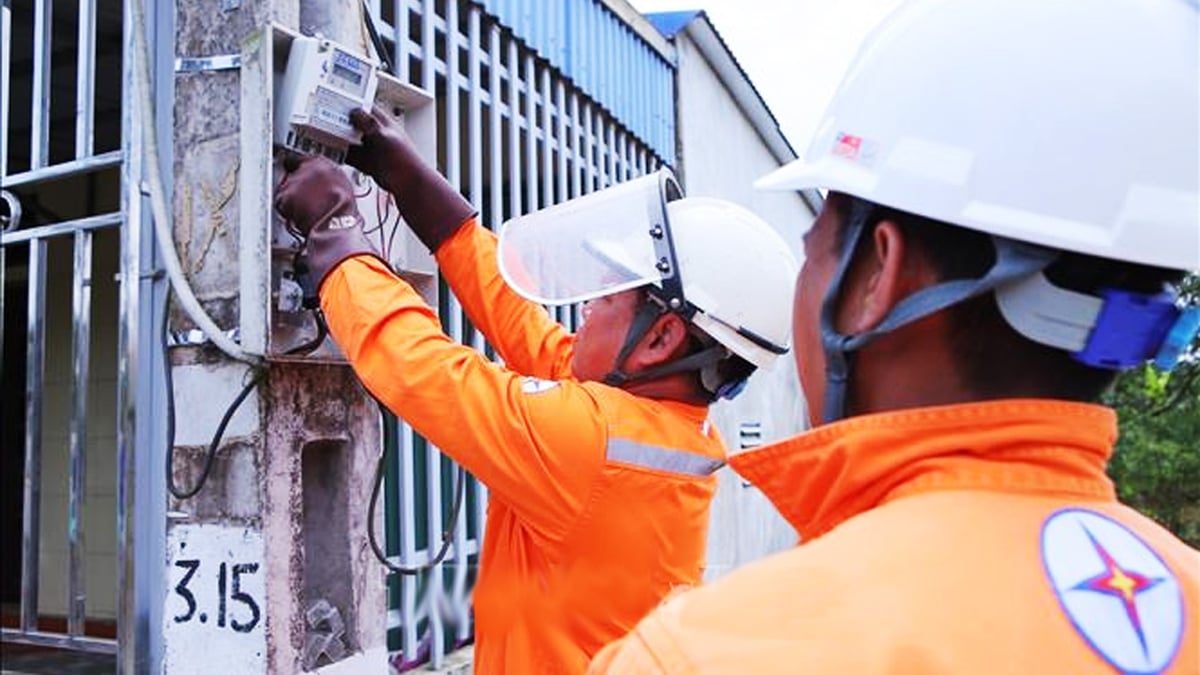

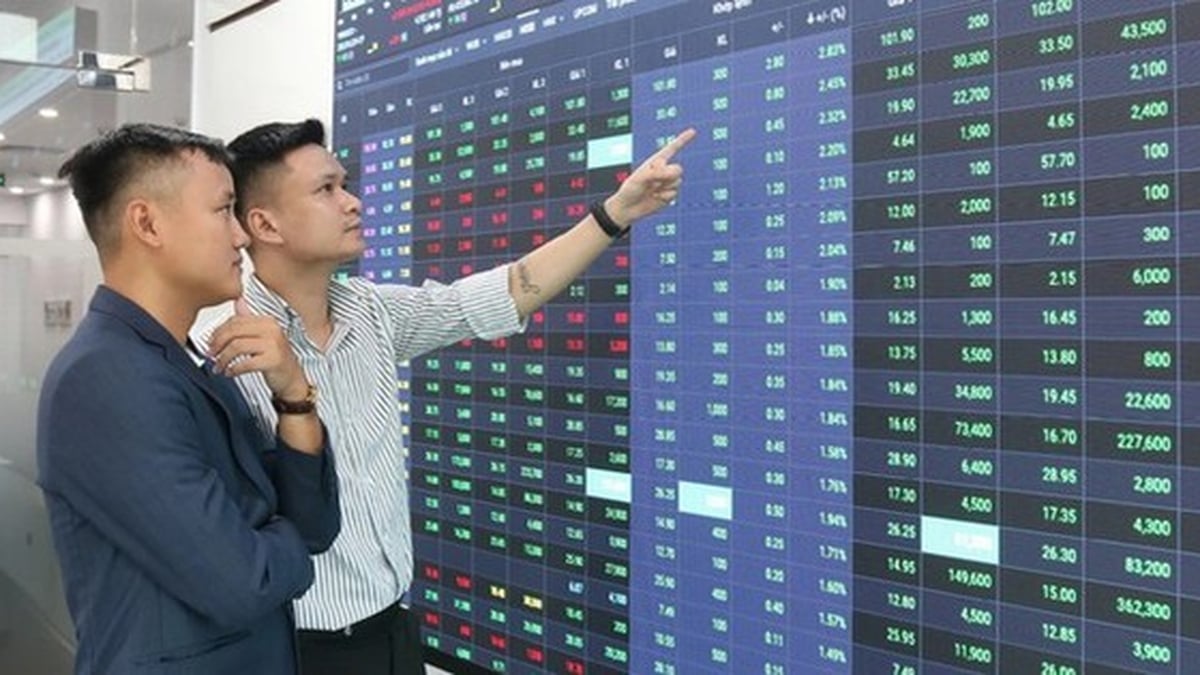

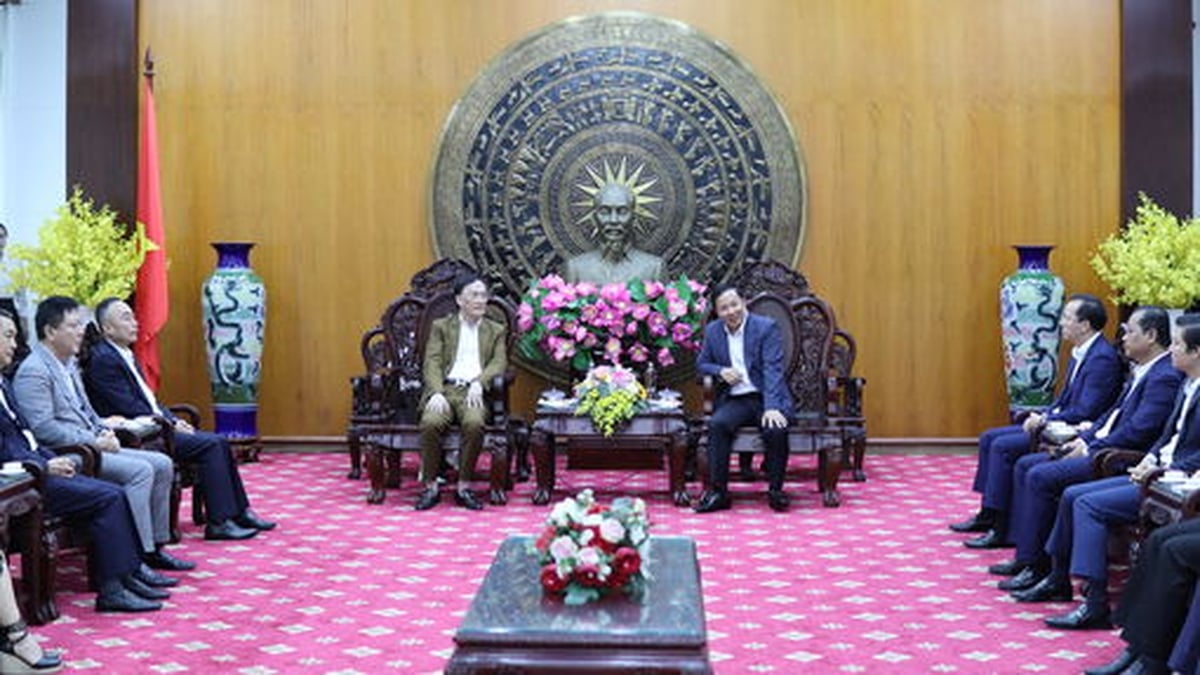


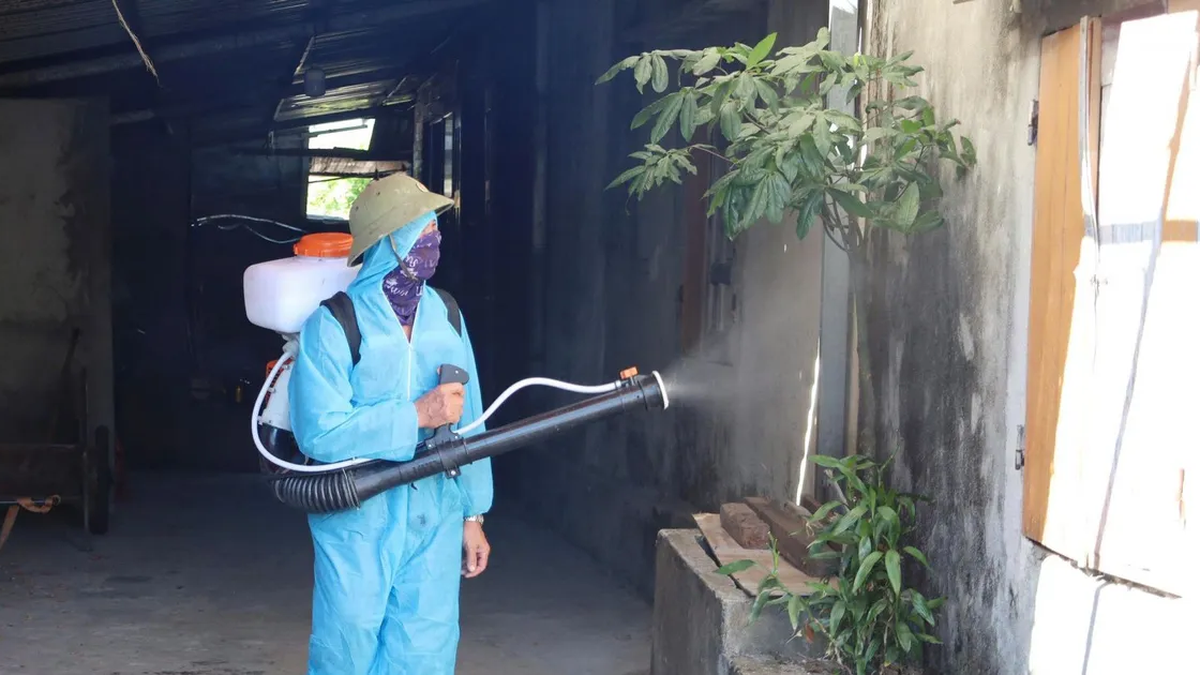
































































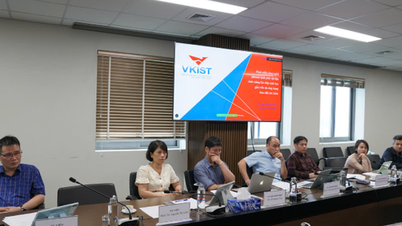
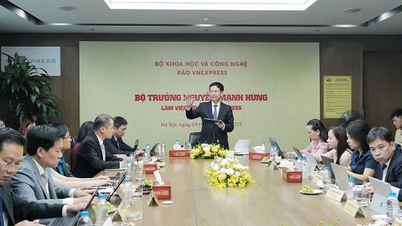
















![[Infographic] In 2025, 47 products will achieve national OCOP](https://vphoto.vietnam.vn/thumb/402x226/vietnam/resource/IMAGE/2025/7/16/5d672398b0744db3ab920e05db8e5b7d)





Comment (0)